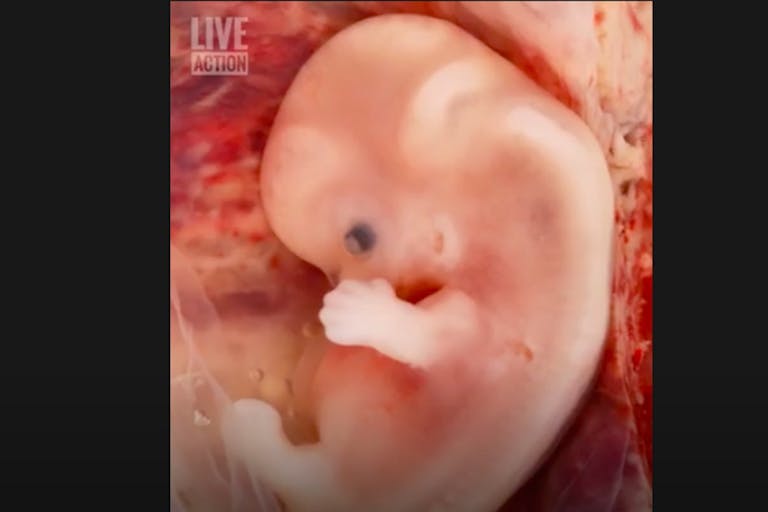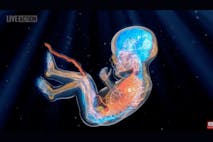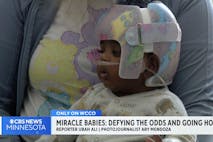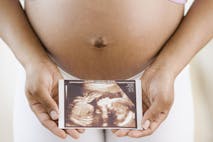
SHOCK REPORT: New South Wales averages 20 'assisted deaths' weekly
Bridget Sielicki
·
Yet another pro-abortion political hit piece ignores science on preborn child’s heartbeat
An Associated Press story featured in newspapers around the country attacks pro-life heartbeat laws by claiming they are based on “emotion, not science.” However, the so-called “science” cited is at odds with both logic and established science, resulting in a pro-abortion political hit piece masquerading as an unbiased article.
The authors lean heavily on the authority of Dr. Michael Cackovic, an Ohio State University obstetrician specializing in maternal fetal medicine. Dr. Cackovic is known to be an abortion-friendly physician. In 2019, he was interviewed by the pro-abortion Rewire News where he defended his school’s affiliation with Planned Parenthood for the training of OBGYN residents, and he also spoke out against Ohio’s pro-life heartbeat law in a CBS story. No other physicians were interviewed on the question of embryonic heartbeats, and only one peripherally-related study is cited.
Dr. Cackovic is portrayed as exasperated that pro-life laws have used “fetal heartbeat” as the criterion for protecting a preborn baby “because at the point where advanced technology can detect that first flutter, as early as six weeks, the embryo isn’t yet a fetus and it doesn’t have a heart.” Later on, quoting Dr. Cackovic, the article laments that heartbeat laws are made possible by “‘our amazing technological advances’ that allow detection of the earliest signs of embryonic cardiac activity, ‘and nothing else.’”

Dr. Cackovic presents a distinction without a difference. Whether an embryo or a fetus, the preborn baby is a human who has been conceived and is growing within the womb. The “first flutter” detected is the earliest sign of a human heart in the preborn baby — the standard for determining life. As the Endowment for Human Development’s (EHD) series of videos show, the preborn baby has a detectable heartbeat very soon after fertilization (it begins to beat between days 16 and 22), a heart that will beat “approximately 54 million times before birth.”
READ: Woman pressured into abortion: ‘No one told me… my baby already had a beating heart’
Article continues below
Dear Reader,
Have you ever wanted to share the miracle of human development with little ones? Live Action is proud to present the "Baby Olivia" board book, which presents the content of Live Action's "Baby Olivia" fetal development video in a fun, new format. It's perfect for helping little minds understand the complex and beautiful process of human development in the womb.
Receive our brand new Baby Olivia board book when you give a one-time gift of $30 or more (or begin a new monthly gift of $15 or more).
Dr. Cackovic claims the earliest signs of a heartbeat cannot be heard but “only seen on ultrasound.” This observation has no pertinent merit. The reality is that there is no difference between what the authors describe as “earliest signs of cardiac activity” and a heartbeat.
According to a variety of early human and anatomy texts, studies, and universities, the heart is the first organ to form. Indeed, embryonic heart rate (EHR) is a very useful measurement, especially when compared to crown-to-rump length (CRL) when measuring preborn babies in the earliest weeks. For them, “heartbeat” is a good enough term for the blood flowing and being pushed through the still-developing heart. And in fact, some babies’ hearts still continue to develop after birth in the cases of heart murmurs closing on their own with increased maturity.

Even Planned Parenthood’s own website states that, during weeks five and six of a baby’s gestation, a “very basic beating heart and circulatory system develop.” As the series of EHD gestational videos demonstrate, the preborn baby’s embryonic cardiac activity does not stop once it begins; it merely grows and develops more fully.
The AP story fails basic, even cursory logic as well as minimal scrutiny against the facts at hand. It is merely the latest in a genre of reporting seeking to dehumanize the preborn baby by implying that the earliest presence of a heartbeat is something other than what it is: clear evidence of the existence of a person deserving of protection.
“Like” Live Action News on Facebook for more pro-life news and commentary!
Live Action News is pro-life news and commentary from a pro-life perspective.
Contact editor@liveaction.org for questions, corrections, or if you are seeking permission to reprint any Live Action News content.
Guest Articles: To submit a guest article to Live Action News, email editor@liveaction.org with an attached Word document of 800-1000 words. Please also attach any photos relevant to your submission if applicable. If your submission is accepted for publication, you will be notified within three weeks. Guest articles are not compensated (see our Open License Agreement). Thank you for your interest in Live Action News!

Bridget Sielicki
·
Media
Cassy Cooke
·
Media
Cassy Cooke
·
Human Interest
Kelli Keane
·
Analysis
Sheena Rodriguez
·
Analysis
Cassy Cooke
·
Human Interest
Laura Nicole
·
Human Interest
Laura Nicole
·
Newsbreak
Laura Nicole
·
Human Interest
Laura Nicole
·
Human Interest
Laura Nicole
·